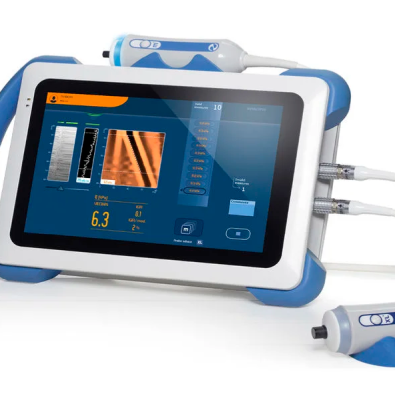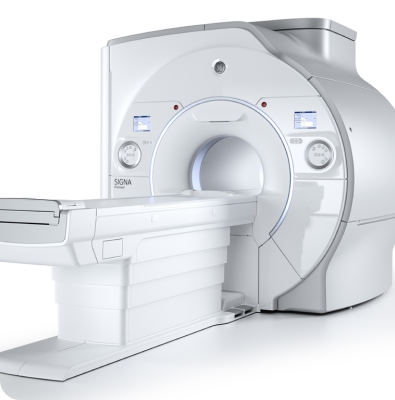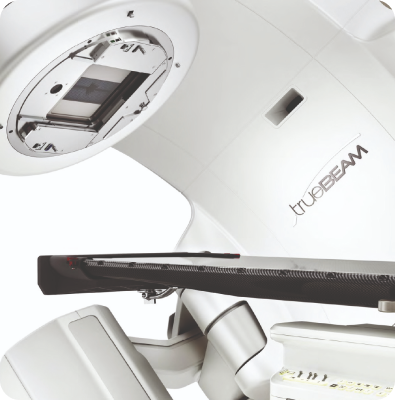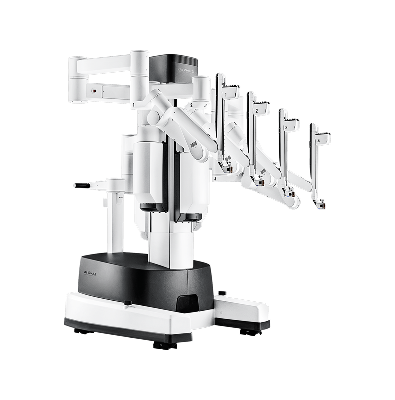Child and adolescent psychiatry focuses on the developmental processes of mental, cognitive, academic, and social functioning from birth through adolescence (approximately ages 18–20). It addresses disruptions in these developmental stages, mental disorders, and the impact they have on academic and social functioning. Child and adolescent psychiatry is a subspecialty pursued after completing six years of medical school, followed by an additional four to five years of specialized training.
The field encompasses monitoring the cognitive, sexual, academic, and social development of children and adolescents, providing family counseling on nutrition and toileting habits, family relationships, and parenting styles. It also includes individual and family therapies, as well as pharmacological treatments, for mental disorders that deviate from healthy development.
Which Mental Disorders Are Addressed in Child and Adolescent Psychiatry?
What Is an Intellectual (Cognitive) Developmental Disorder?
An intellectual developmental disorder is a condition that involves deficits in both cognitive and adaptive functioning, affecting conceptual, social, and practical domains, and begins during the developmental period. It is characterized by difficulties in reasoning, problem-solving, planning, abstract thinking, judgment, academic learning, and learning from experience — showing a level of development not consistent with age expectations.
What Is Autism Spectrum Disorder?
Autism spectrum disorder is characterized by atypical social approaches, a lack or inadequacy of reciprocal conversation, and challenges in sharing interests, emotions, or affect, as well as initiating or maintaining social interactions. Additional symptoms include a lack of social-emotional reciprocity, deficits in verbal and nonverbal communication, abnormalities in eye contact and body language, or difficulties in understanding and using gestures and facial expressions. There may also be stereotyped or repetitive motor movements, repetitive use of objects (such as spinning them continuously), echolalia (repeating others’ words), use of idiosyncratic phrases, insistence on sameness, inflexible adherence to routines, and ritualized verbal or nonverbal behaviors. Children may display restricted and fixated interests or show limited flexibility in behavior, representing a neurodevelopmental disorder with variable presentation and severity.
What Is Attention Deficit Hyperactivity Disorder (ADHD)?
ADHD is characterized by persistent patterns of inattention, hyperactivity, and impulsivity that interfere with learning, family relationships, peer interactions, and overall daily functioning.
• Symptoms of Inattention
The individual often fails to give close attention to details or makes careless mistakes in schoolwork. They may overlook or miss details, have difficulty sustaining attention during tasks or play, and seem not to listen when spoken to directly. They may fail to follow through on instructions, have difficulty organizing tasks, avoid or dislike activities that require sustained mental effort, frequently lose necessary items, be easily distracted by external stimuli, and appear forgetful in daily activities.
• Symptoms of Hyperactivity and Impulsivity
The individual often fidgets with hands or feet, squirms in their seat, or leaves their seat in situations where remaining seated is expected. They may run about or climb in inappropriate situations, have difficulty engaging in leisure activities quietly, and seem to be “on the go” or “driven by a motor.” Other symptoms include excessive talking, blurting out answers before questions are completed, difficulty waiting their turn, and interrupting or intruding on others’ conversations or activities.
How Is ADHD Diagnosed?
For a diagnosis of ADHD, symptoms must appear before the age of seven, be present in at least two settings (such as home and school), persist over time, and significantly impair daily functioning. Diagnosing ADHD in preschool-aged children can be challenging, as high activity levels and behavioral variability are common in this age group. Therefore, continuous observation and developmental follow-up are important. The clinician reaches a diagnosis by integrating clinical observations, examination findings, psychometric test results, and information obtained from parents and teachers.
Specific Learning Disorders
A specific learning disorder refers to difficulties in listening, thinking, understanding, expressing oneself, reading, writing, or mathematics, despite having normal or above-average intelligence compared to peers. These difficulties are not due to sensory deficits, intellectual disability, or inadequate schooling.
Children with specific learning disorders may experience difficulties in auditory and visual perception (understanding what they hear or see), processing speed (taking longer to process information), and organization (structuring and ordering information correctly). Other areas of difficulty include memory (storing and recalling information), fine motor skills (writing, cutting with scissors), gross motor skills (jumping, running, walking), attention span, abstraction (interpreting symbols), and social competence (interacting effectively with others).
Subtypes include dyslexia (reading disorder), dysgraphia (writing disorder), dyscalculia (mathematics disorder), or a combination of these conditions.
What Are Tic Disorders?
Tic disorders are conditions characterized by involuntary motor movements or vocalizations that cause significant distress or impairment in social, occupational, or other important areas of functioning. These may include repetitive facial grimacing, nose twitching, eye blinking, shoulder shrugging, or vocal tics such as throat clearing and other sounds.
What Are Psychotic Disorders?
Psychotic disorders involve disturbances in thought and perception, such as delusions, hallucinations, disorganized thinking, incoherent or tangential speech, and severely disorganized or catatonic behavior. These symptoms reflect a disconnection from reality and can significantly impair social and academic functioning.
What Is Depressive Disorder?
Depressive disorder is characterized by a persistently low or sad mood nearly every day, feelings of emptiness or hopelessness, and a marked loss of interest or pleasure in activities. Other symptoms include changes in appetite (either decreased or increased), sleep disturbances (insomnia or excessive sleep), feelings of worthlessness or inappropriate guilt, difficulty concentrating or making decisions, and recurrent thoughts of death or suicide.
What Is Bipolar (Manic–Depressive) Disorder?
In bipolar disorder, the manic phase presents with an elevated or irritable mood, inflated self-esteem or grandiosity, excessive talkativeness, flight of ideas or racing thoughts, decreased need for sleep, and engagement in risky behaviors such as excessive spending, reckless sexual activity, or impulsive investments. The depressive phase includes symptoms consistent with depressive disorder — sadness, loss of energy, guilt, and hopelessness.
What Is Separation Anxiety Disorder?
Separation anxiety disorder is marked by excessive fear or distress related to being apart from home or primary attachment figures. Children may worry excessively about losing their caregivers or about potential harm (such as illness, injury, or death) befalling them. This fear may lead to reluctance or refusal to go to school or other places, to stay away from home, or to sleep without being near the caregiver. Symptoms may include nightmares about separation or physical complaints such as headaches, stomachaches, nausea, or vomiting when separation occurs or is anticipated.
What Is Selective Mutism?
Selective mutism refers to the consistent inability to speak in specific social situations (such as at school or with unfamiliar people) despite speaking normally in other settings. This behavior interferes with academic and social communication and is not due to a lack of language knowledge.
What Is Panic Disorder?
Panic disorder involves recurrent and unexpected panic attacks — sudden surges of intense fear or discomfort that peak within minutes. Symptoms during these attacks may include palpitations, sweating, trembling, shortness of breath, chest pain, nausea, dizziness, chills or heat sensations, numbness, feelings of unreality or detachment, fear of losing control, or fear of dying.
What Is Generalized Anxiety Disorder?
Generalized anxiety disorder is characterized by excessive and persistent worry about various events or activities such as school or performance situations. Individuals often experience restlessness, fatigue, difficulty concentrating or mind going blank, irritability, muscle tension, and sleep disturbances (trouble falling or staying asleep, or unsatisfying sleep).
What Is Obsessive–Compulsive Disorder (OCD)?
Obsessive–compulsive disorder involves obsessions (persistent, intrusive thoughts, urges, or images that cause anxiety or distress) and compulsions (repetitive behaviors or mental acts performed in response to obsessions or according to rigid rules). Common compulsions include excessive hand washing, checking, arranging, or silently repeating words or prayers. These behaviors are aimed at reducing anxiety or preventing a feared event, but they are not realistically connected to what they are intended to prevent, or they are clearly excessive.
What Is Post-Traumatic Stress Disorder (PTSD)?
Post-traumatic stress disorder develops after exposure to one or more traumatic events, such as directly experiencing or witnessing severe injury, violence, or the threat of death, or learning that such events occurred to close family members or friends. Individuals may experience intrusive memories, flashbacks, distressing dreams, or intense psychological or physiological reactions to reminders of the trauma. Other symptoms include avoidance of reminders, emotional numbness, hyperarousal, and negative changes in mood or cognition related to the traumatic event.
What Are Eating Disorders?
Anorexia nervosa is characterized by restricted energy intake relative to requirements, leading to significantly low body weight for one’s age, sex, and developmental stage. There is an intense fear of gaining weight or becoming fat, or persistent behavior that interferes with weight gain, despite being underweight. Individuals often have a distorted perception of their body weight or shape, place undue importance on body image in self-evaluation, or fail to recognize the seriousness of their low body weight.
Bulimia nervosa involves recurrent episodes of binge eating followed by inappropriate compensatory behaviors to prevent weight gain, such as self-induced vomiting, misuse of laxatives or diuretics, fasting, or excessive exercise. These behaviors occur regularly and are accompanied by a sense of loss of control over eating.
What Are Elimination Disorders?
Elimination disorders occur when a child who has reached an age at which bowel and bladder control is expected, repeatedly urinates into bed or clothes (enuresis) or passes feces in inappropriate places (encopresis). These behaviors are not due to medical conditions and often cause distress or social difficulties.
What Are Sleep Disorders?
Sleep disorders include excessive sleepiness, irregular sleep–wake patterns, sleepwalking, night terrors, and recurrent nightmares. These conditions can interfere with normal functioning, mood regulation, and daily performance.
What Is Gender Dysphoria?
Gender dysphoria refers to a marked incongruence between one’s experienced or expressed gender and assigned sex, accompanied by significant distress or impairment. Children may express a strong desire to be of another gender, insist they are another gender, prefer wearing clothes typical of the opposite sex, engage in cross-gender role play, and show a preference for toys or activities typically associated with the opposite gender.
What Are Oppositional Defiant and Conduct Disorders?
Oppositional defiant disorder and conduct disorder involve persistent patterns of defiant, hostile, or aggressive behaviors toward authority figures or peers. Symptoms may include frequent temper outbursts, arguing with adults, deliberate annoyance of others, vindictive behavior, carrying or using harmful objects, damaging property, hurting animals or people, stealing, or deceitful behavior. These behaviors interfere with social, academic, and family functioning and often require early intervention and therapy.







